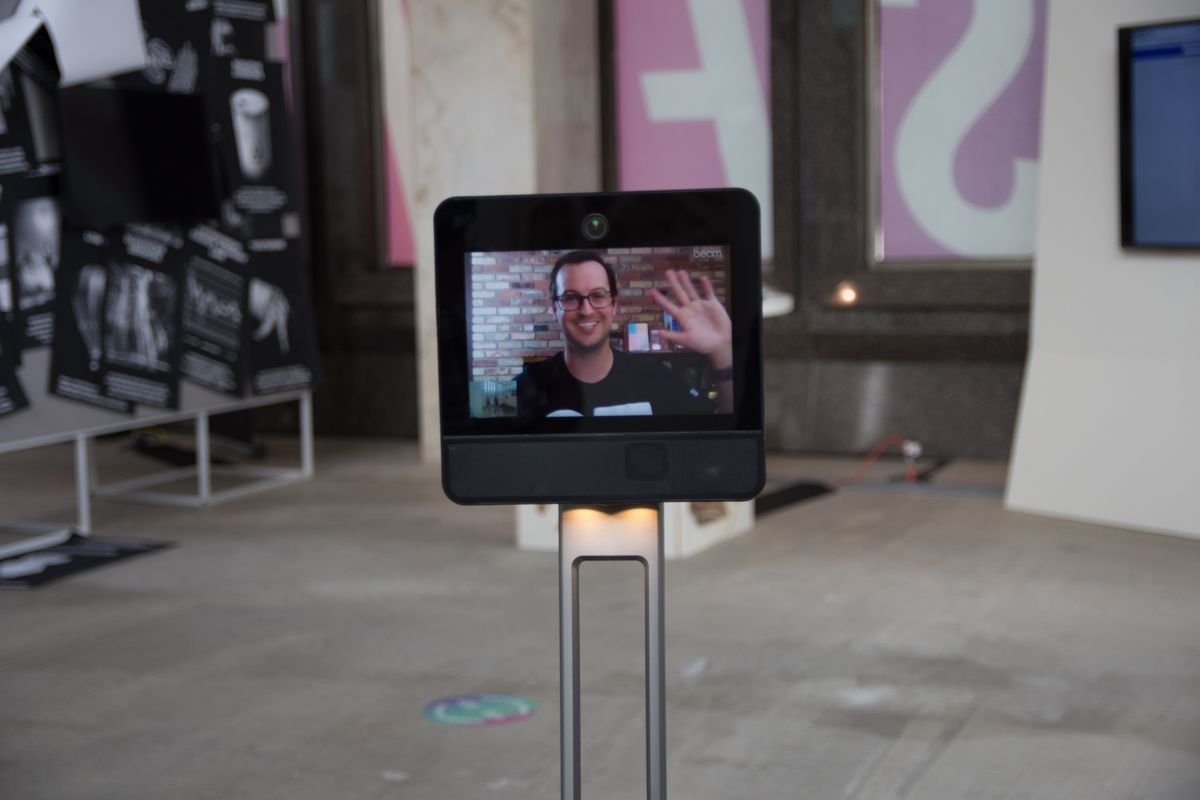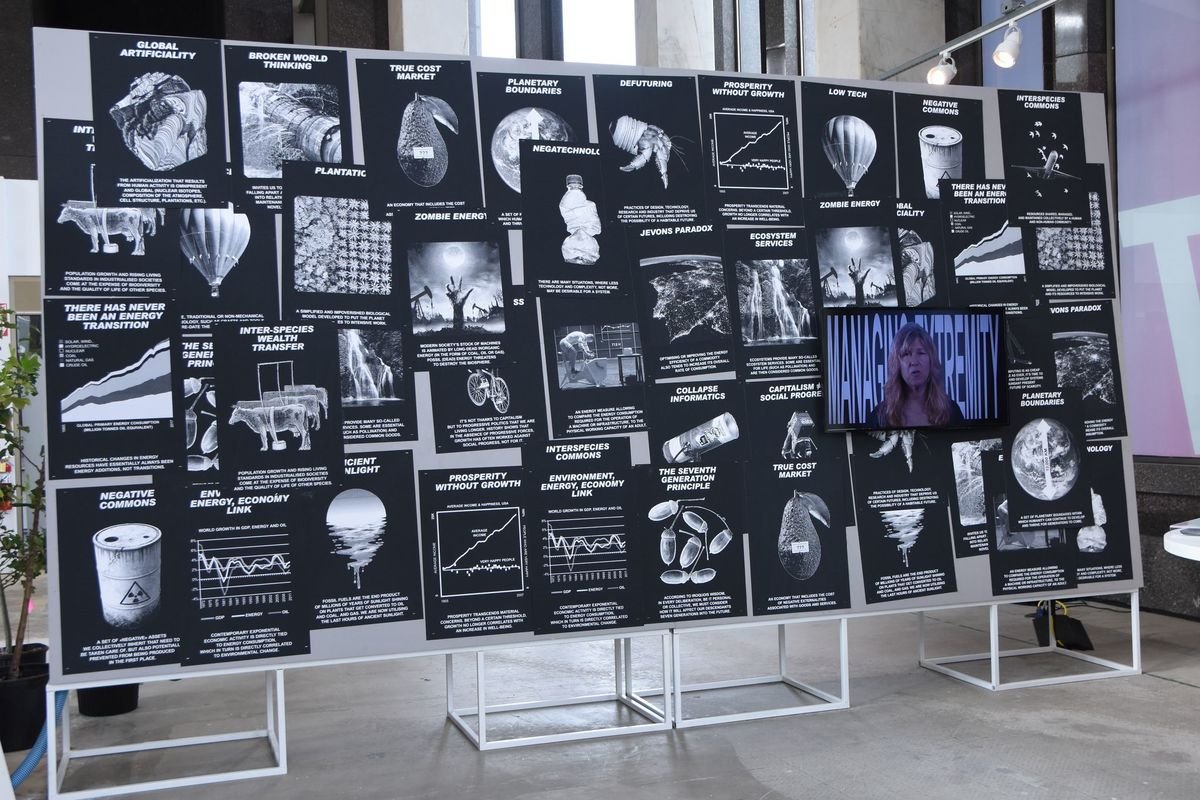Robot mediators: reinventing mediation in a time of urgency
In light of the coronavirus pandemic, telepresence robot mediation was designed to help visitors explore FUTURE PRESENT, Science Gallery Detroit’s exhibition showcasing the impact of design on society.
Image of a Mediator using a telepresence robot during FUTURE PRESENT (photo: Montez Miller, 2020)
When the State of Michigan went under a stay-at-home order in March 2020, due to the Coronavirus pandemic, Science Gallery Detroit had to rethink and refashion its exhibition FUTURE PRESENT, ensuring the precious interactivity and synchronous conversation between Mediators and visitors in the gallery continued, while also protecting Mediators.
Between 2017 and 2018, Michigan State University’s College of Education executed a successful study in their blended master’s and PhD courses, which enabled online students to move around the room using a video conference robot to see whether having an “embodied” physical presence would improve their engagement and connection to classmates. Inspired by this initiative, Science Gallery Detroit came up with the idea of adapting the telepresence robots, allowing Mediators to move around the gallery and speak to visitors in real-time from their homes.
“The challenges COVID-19 introduced enabled us to design and implement co-creation practices we had hoped to engage the Mediators with for a while.”
FUTURE PRESENT at Science Gallery Detroit (Montez Miller, 2020)
The robots were controlled remotely from a downloadable desktop application that could be located anywhere in the world. The Mediators appeared on a flat, rectangular screen, like the experience of being in a regular video call, with the difference that they could navigate the robot remotely around the physical gallery, similar to moving a character around on a video game. While learning from this new form of interaction, Mediators were also heavily involved in digital content creation for the FUTURE PRESENT exhibition, producing blog and social media posts, and also developing smartphone tours using the platform Guide By Cell.
This hybrid initiative presented new challenges, such as transmitting the Mediator’s body language to a screen and reading different physical expressions from the visitors. The team rapidly adapted to using verbal cues, questions and descriptions to engage the public, who received the surprising interaction with delight and left extremely positive feedback.
WHAT THEY SAID?
‘We have always strived to create a culture where the Mediators know and understand that their perspectives and ideas are valued by the Science Gallery Detroit team and that those ideas will be explored and potentially implemented. In some ways, the circumstances and challenges COVID-19 introduced actually enabled us to design and implement co-creation practices we had hoped to engage the Mediators with for a while.’ - Caroline White, Education and Learning Manager, Science Gallery Detroit
‘Telepresence robot mediation is the most creative solution in workplace accessibility I have ever witnessed. The robot setup allows me to manoeuvre around the gallery space freely with a clear 180-degree view. As a “robot” Mediator, I continue to have meaningful conversations with gallery visitors without jeopardizing my health or the visitor’s health during the COVID-19 pandemic. In an increasingly technical world, embracing telepresence robots has the potential to transform the workspace and other settings into more inclusive environments for those who cannot join physically due to distance, time, health, or disability constraints.’ – Shanmin Sultana, Mediator
WHAT WERE THE BENEFITS AND IMPACTS?
▶ Inspiring creativity
▶ Public Engagement
▶ Employee Engagement
▶ Communication skill development
▶ Mediator Development
Sources: Caroline White, Education and Learning Manager, Science Gallery Detroit and Shanmin Sultana, Mediator, Science Gallery Detroit.
Compiled by: Jahitza Balaniuk, Science Gallery International in 2021
Activity date: 2020


